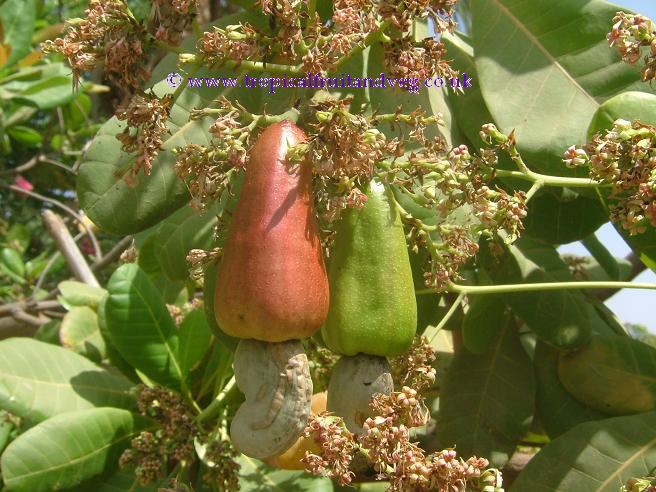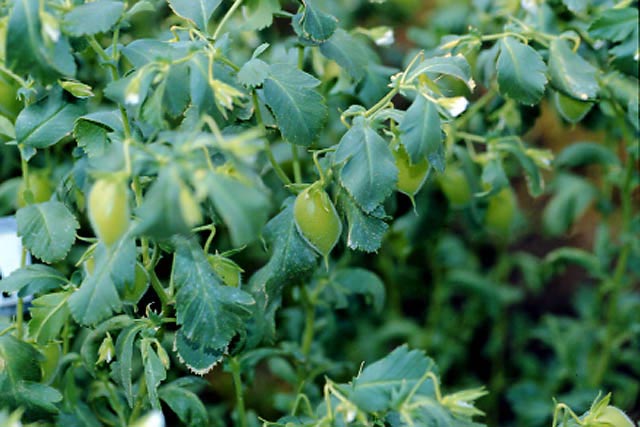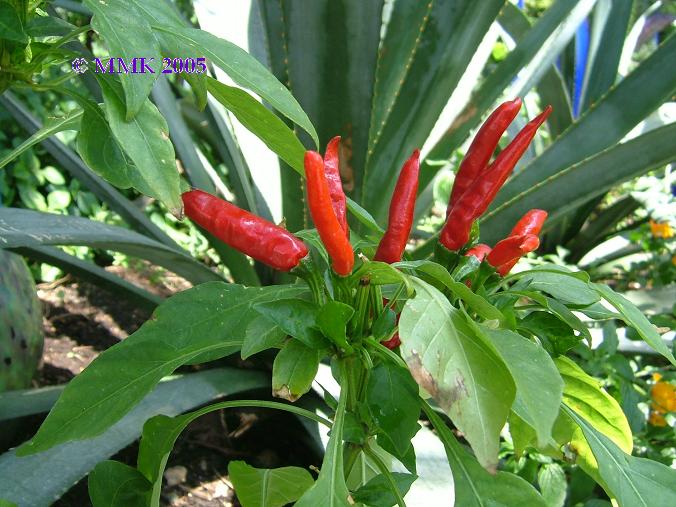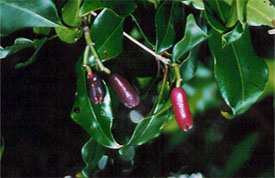| Uses: 16 to 20 of 99 NextPage Go to Page: 1 2 3 4 5 6 7 8 9 10 11 12 13 14 15 16 17 18 19 20 | |

|
Cashew Apple
Botanical Name: Anacardium occidentale In Goa, India, the apples are still trampled by foot to extract the juice for the locally famous distilled liquor, feni. In Brazil the juice is used as a fresh beverage and for wine. |

|
Cassava
Botanical Name: Manihot esculenta Cassava is mainly grown for human consumption but is increasily being grown for animal feed and industrial usage. It is a major source of starch for population around the tropics particularly in Africa. The roots are rarely eaten fresh but are usually cooked, steamed, fried or roasted when fresh. Cassava extracted juice is fermented into a strong liquor called kasiri. Tapioca is made from the starch extract of cassava root. |

|
Chickpea
Botanical Name: Cicer arietinum Mature chickpeas can be eaten in salads, cooked in stews, ground into a flour called gram flour (also known as besan, and used in Indian cuisine), ground and shaped in balls and fried as falafel, stirred into a batter and baked to make farinata, cooked and ground into a paste called hummus, or roasted, spiced and eaten as a snack (e.g. leblebi). In India, where they are referred to as 'chana,' chickpeas provide a major source of protein in a predominantly vegetarian culture. Chick pea flour is used as a batter to coat various vegetables and meats before frying. Chickpea flour is also used to make 'Burmese tofu,' a food originating with the Shan people of Burma. Unripe chickpeas are often picked out of the pod and eaten as a raw snack in many parts of India, and the plants are eaten there as a green vegetable in salads. |

|
Chili Pepper
Botanical Name: Capsicum annuum, C. Frutescens, C. chinense The fruit is eaten cooked or raw for its fiery hot flavour which is concentrated along the top of the pod. The stem end of the pod has glands which produce the capsiacin, which then flows down through the pod. Removing the seeds and inner membranes is thus effective at reducing the heat of a pod.Well-known dishes with a strong chili flavour are Mexican salsas, Tex-Mex chili con carne, and Indian curries. Chili powder is a spice made of the dried ground chilis but with small amounts of cayenne added for heat. Bottled hot sauces such as Tabasco sauce are made from Tabasco chilies, similar to cayenne, which may also be fermented.Korean, Indian, Indonesian, Szechuan and Thai cuisines are particularly associated with the chili pepper, although the plant was unknown in Asia until Europeans introduced it there.Sambal is dipping sauce made from chili peppers with any other ingredients such as garlic, onion, shallots, salt, vinegar and sugar. It is very popular in Indonesia, Malaysia and Singapore. |

|
Clove
Botanical Name: Eugenia aromaticum, Eugenia caryophyllus Cloves can be used in cooking either whole or in a ground form, but as they are extremely strong they are used sparingly. The spice is used throughout Europe and Asia and is smoked in a type of cigarettes locally known as kretek in Indonesia and in occasional coffee bars in the West, mixed with marijuana to create marijuana spliffs. Cloves are also an important incense material in Chinese and Japanese culture. |
| 16 to 20 of 99 NextPage Go to Page: 1 2 3 4 5 6 7 8 9 10 11 12 13 14 15 16 17 18 19 20 | |